 |
JAPANESE PRINTS
A MILLION QUESTIONS
TWO MILLION MYSTERIES
Ukiyo-e Prints浮世絵版画 |
|
Port Townsend, Washington |
|
TSUKIOKA YOSHITOSHI 月岡芳年 つきおかよしとし 1839-1892 |
|
Subject: Kotegara Hanji in the Rain 鏝柄半次 (in the Rain) こてがらはんじ (in the Rain) |
|
Series Title: Azuma no Nishiki Ukiyo Kodan 東錦浮世稿談 あずまにしきうきよこうだん "Tales of the Floating World on Eastern Brocade" |
|
9th Month 1867 Keiō 3 慶応3 |
|
Signed: Ikkaisai Yoshitoshi hitsu 一魁斎芳年筆 いかいさいよしとしひつ |
|
Size: 14 1/8" x 9 3/8" |
|
Illustrated: Beauty and Violence: Japanese Prints by Yoshitoshi 1839-1892, Eric van den Ing & Robert Schaap with introduction by John Stevenson, Society for Japanese Arts, 1992, p. 24. |
|
Originally $920.00 Now on sale for $670.00 SOLD! |
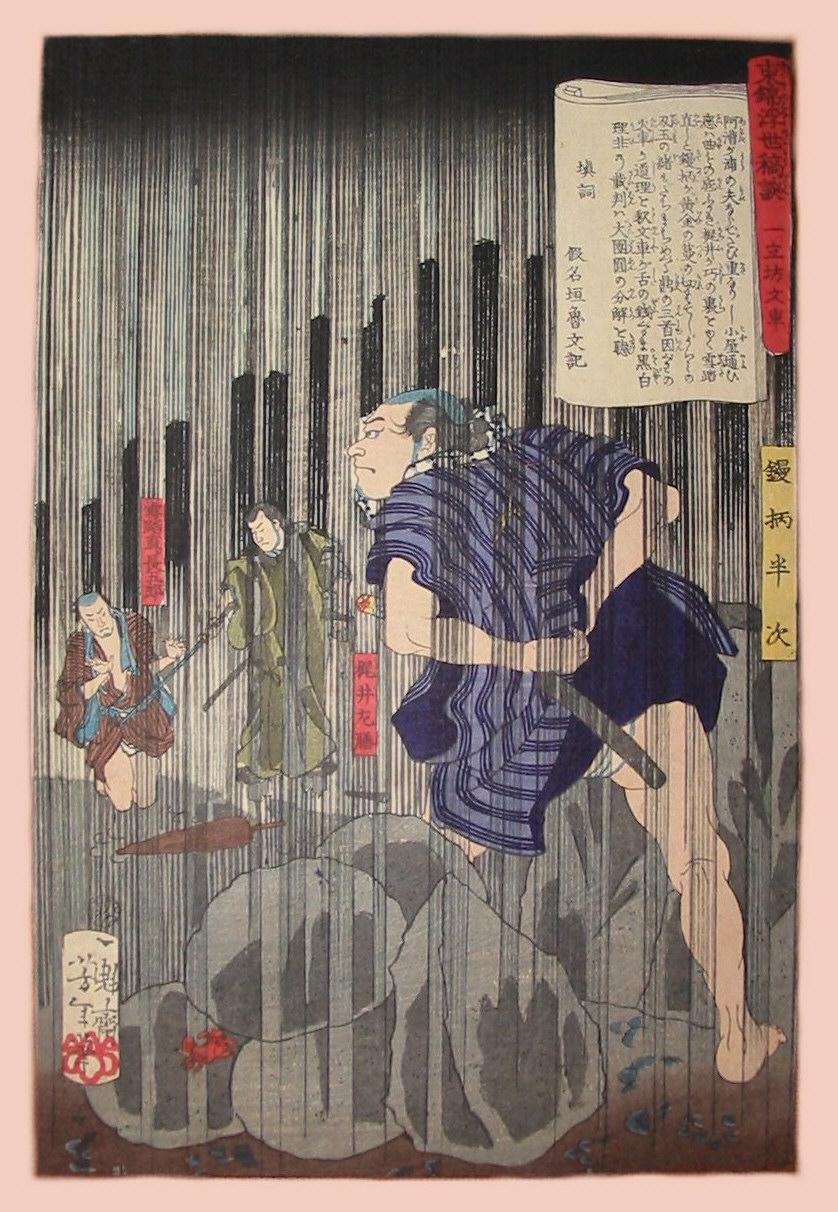
 |
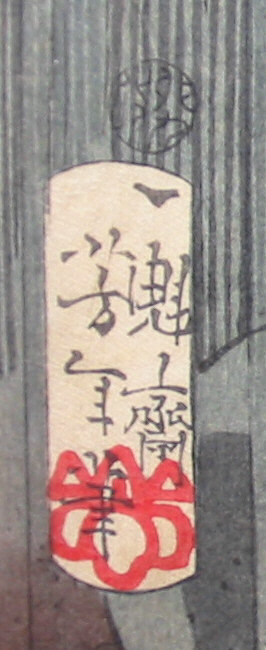 |
||
|
Cartouche: Kotegara Hanji |
Signature: Ikkaisai Yoshitoshi hitsu |
||
| 鏝柄半次 | |||
| こてがらはんじ |
|
|
|||||||||||||||||||||||
|
|
|
|
|
||||||||||||||||||||
|
KANI 蟹 かに The Crab |
|||||||||||||||||||||||
|
|
|||||||||||||||||||||||
|
During the Japanese occupation of much of China during the 1930s and 40s there was one highly respected, elderly Chinese artist who was frequently commissioned to produce paintings for the collections of his captors. Qi Bashi "...responded to Japanese officers' demands...with pictures of crabs inscribed with defiant witticisms."
The Chinese had a long tradition in the arts of expressing their displeasure with occupiers through genuinely veiled, scholarly references. Qi Bashi was already 80 years old when confronted with this unpleasant situation. He "...delighted in painting these crustaceans and took advantage of their sideways locomotion to satirize lawlessness and unruly behavior in people." (1) |
|||||||||||||||||||||||
|
|
|||||||||||||||||||||||
|
1. The Paintings of Xugu and Qi Bashi, by Jung Ying Tsao, University of Washington Press, 1993, p. 300. |
|||||||||||||||||||||||
|
|
|||||||||||||||||||||||
|
|
|||||||||||||||||||||||
|
|
|||||||||||||||||||||||
|
The Heike Crab 平家蟹 へいけがに |
|||||||||||||||||||||||
|
|
|||||||||||||||||||||||
|
|
|||||||||||||||||||||||
|
|
|||||||||||||||||||||||
|
One type of crab caught in the Inland Sea are referred to as Heike crabs. The back of their shells resemble human faces. They got this name after the Battle of Dannoura when the Taira clan, also known as the Heike, were defeated by the Minamoto, aka Genji. The drowned Heike were thought to have morphed into these creatures.
Note: There is no connection between the comment above and the crab in this print. The only thing they have in common is that they are both referring to crabs. |
|||||||||||||||||||||||
|
|
|||||||||||||||||||||||
|
|
|||||||||||||||||||||||
|
The Toyokuni III print being shown immediately above is not for sale. It was sent to me by a viewer of this page who very kindly gave me their permission to reproduce it. Look closely at the blue crab. The scrunched up Heike face is wonderful. |
|||||||||||||||||||||||
|
|
|||||||||||||||||||||||
|
|
|||||||||||||||||||||||
|
Yoshitoshi's teacher Kuniyoshi produced a number of prints which included red crabs as seen in the detail above. |
|||||||||||||||||||||||
|
|
|||||||||||||||||||||||
|
One of my goals for this entire web site is that it should be both provocative and informative. When I point out a minor motif in any specific print it is with the intention of focusing the viewer's attention to some of the more subtle elements which I am sure were second nature to the Japanese artist and his audience, but often go unnoticed by our contemporaries. The Toyokuni III of a mystical, blue crab was added today, i.e., January 5, 2004. It is a stellar print of which I was totally unaware. Another print detail inset is by Chikanobu. |
|||||||||||||||||||||||
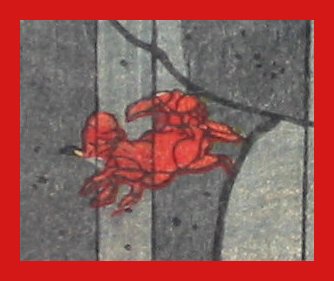
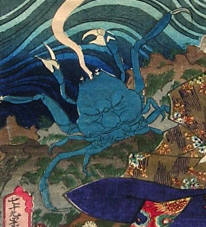

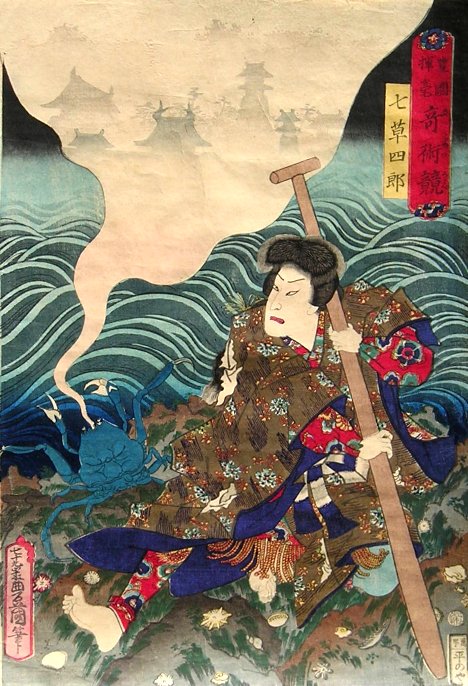
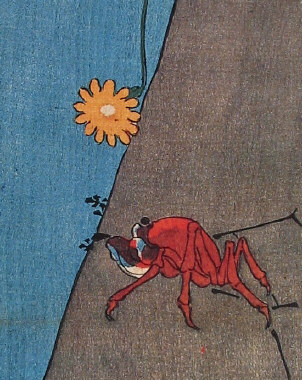
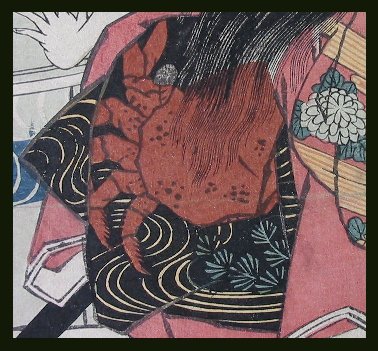
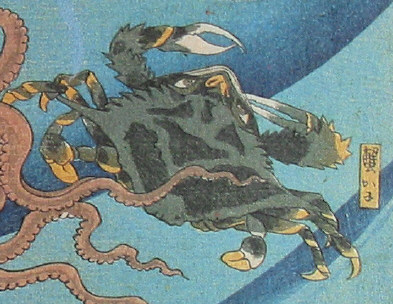
 HOME
HOME